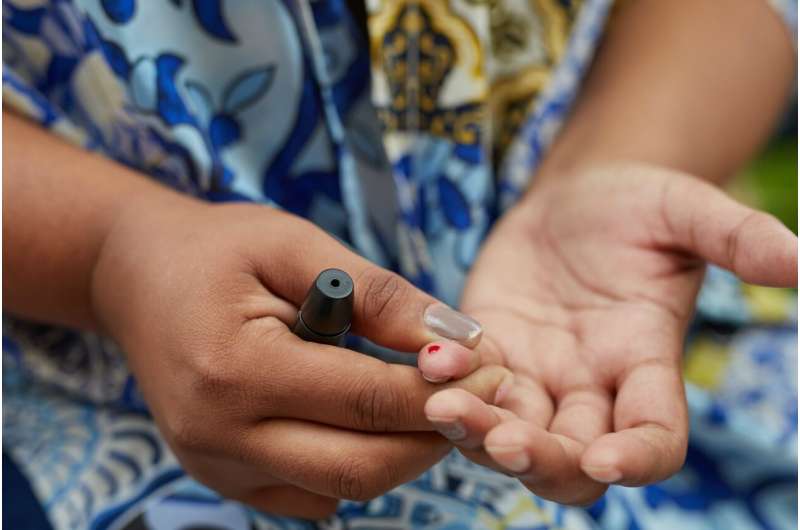This article has been reviewed according to Science X's editorial process and policies. Editors have highlighted the following attributes while ensuring the content's credibility:
fact-checked
peer-reviewed publication
trusted source
proofread
Large Danish study shows migrants face disparities in care for type 2 diabetes

A large, population-wide study of Denmark residents with type 2 diabetes shows that migrants typically face a greater risk of inferior care for their disease than native Danes, particularly when it comes to monitoring their disease and controlling biomarkers—managing blood levels of key substances that are associated with diabetes.
Anders Aasted Isaksen of Aarhus University and Steno Diabetes Center Aarhus, Denmark, and colleagues present these findings in the open-access journal PLOS Global Public Health.
Prior research has shown that, in Denmark and in many other countries, type 2 diabetes is more common among migrants than among people born in those countries, and that migrants may face disparities in diabetes care. However, prior studies have provided limited information about disparities in care for type 2 diabetes among migrants in Denmark.
To help deepen understanding of potential disparities in care, Isaksen and colleagues analyzed data on 254,097 people in Denmark who have type 2 diabetes, including native Danes and migrants from the Middle East, Europe, Turkey, former Yugoslavia, Pakistan, Sri Lanka, Somalia, and Vietnam. They investigated the care received by these patients according to 11 indicators, which are based on recommendations from Denmark's national clinical guidelines.
In line with prior research, they found that, for most migrant groups, type 2 diabetes was more prevalent than for native Danes. Most migrant groups faced a higher risk of inferior care for all five indicators related to monitoring—which include monitoring biomarker levels and screening for foot and eye problems.
Most migrant groups also had a higher risk of worse care than native Danes for the two indicators related to biomarker control. However, for most migrant groups, no disparities were seen for the four indicators related to treatment with medications.
Among all patients in the study, migrants from Somalia faced the worst care; they had elevated risk of inferior care across all 11 indicators and the highest risk in 9.
The researchers call on policymakers and health care providers in Denmark to make efforts to improve on the shortcomings in care they identified. They also call for further research to help shape strategies for addressing these disparities.
The authors add, "Type 2 diabetes care quality is lower in most migrant groups compared to native Danes—particularly in migrants from Somalia."
More information: Isaksen AA, Sandbæk A, Skriver MV, Andersen GS, Bjerg L, Guideline-level monitoring, biomarker levels and pharmacological treatment in migrants and native Danes with type 2 diabetes: Population-wide analyses, PLOS Global Public Health (2023). DOI: 10.1371/journal.pgph.0001277. journals.plos.org/globalpublic … journal.pgph.0001277





















